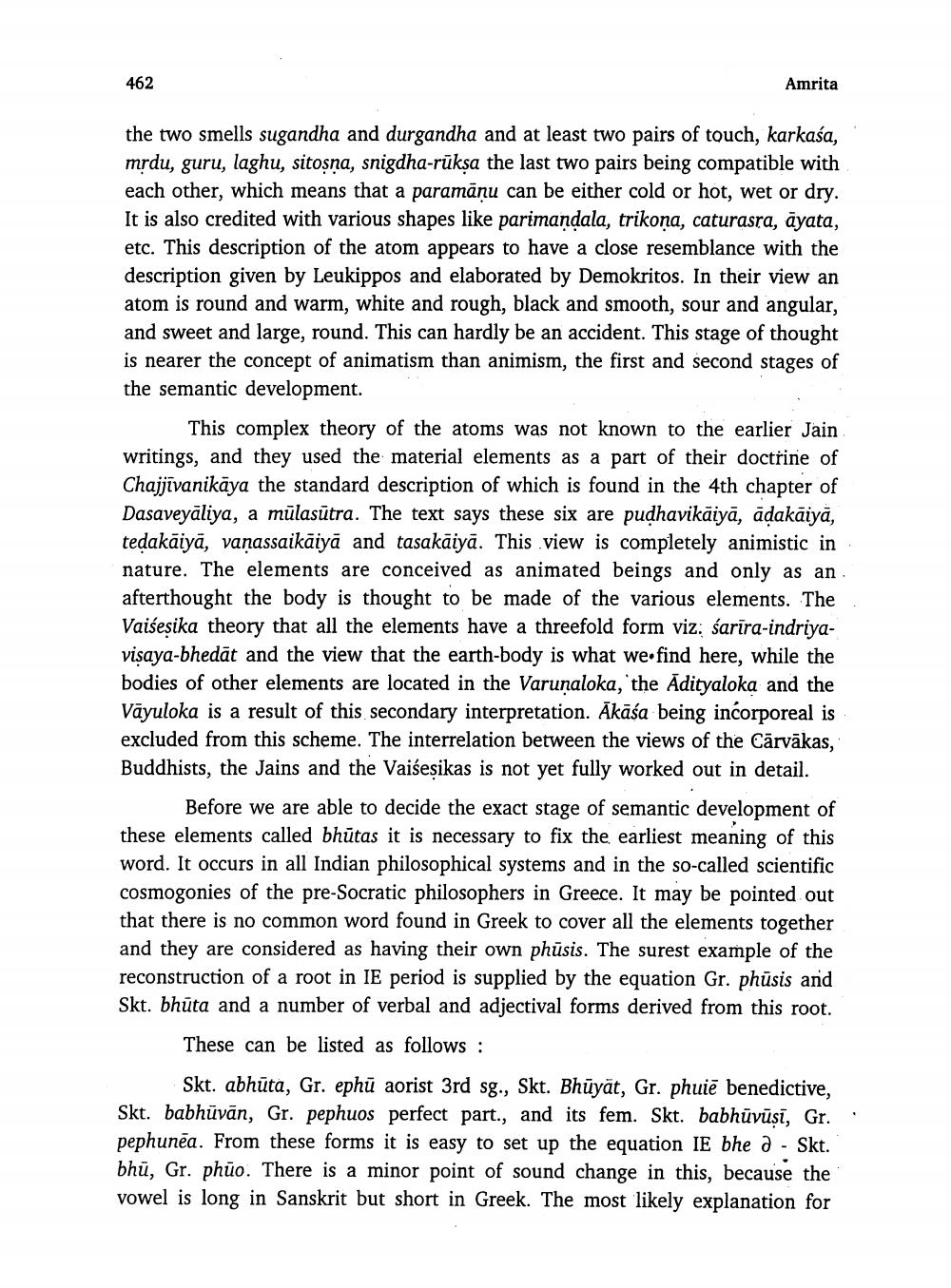________________
462
Amrita
the two smells sugandha and durgandha and at least two pairs of touch, karkasa, mrdu, guru, laghu, sitosna, snigdha-rūksa the last two pairs being compatible with each other, which means that a paramāņu can be either cold or hot, wet or dry. It is also credited with various shapes like parimandala, trikona, caturasra, āyata, etc. This description of the atom appears to have a close resemblance with the description given by Leukippos and elaborated by Demokritos. In their view an atom is round and warm, white and rough, black and smooth, sour and angular, and sweet and large, round. This can hardly be an accident. This stage of thought is nearer the concept of animatism than animism, the first and second stages of the semantic development.
This complex theory of the atoms was not known to the earlier Jain writings, and they used the material elements as a part of their doctrine of Chajjīvanikāya the standard description of which is found in the 4th chapter of Dasaveyaliya, a mūlasūtra. The text says these six are pudhavikāiyā, ādakāiya, tedakāiyā, vanassaikāiyā and tasakāiyā. This view is completely animistic in nature. The elements are conceived as animated beings and only as an afterthought the body is thought to be made of the various elements. The Vaisesika theory that all the elements have a threefold form viz: śarīra-indriyavisaya-bhedāt and the view that the earth-body is what we find here, while the bodies of other elements are located in the Varunaloka, the Adityaloka and the Vayuloka is a result of this secondary interpretation. Akāśa being incorporeal is excluded from this scheme. The interrelation between the views of the Cārvākas, Buddhists, the Jains and the Vaiseșikas is not yet fully worked out in detail.
Before we are able to decide the exact stage of semantic development of these elements called bhūtas it is necessary to fix the earliest meaning of this word. It occurs in all Indian philosophical systems and in the so-called scientific cosmogonies of the pre-Socratic philosophers in Greece. It may be pointed out that there is no common word found in Greek to cover all the elements together and they are considered as having their own phūsis. The surest example of the reconstruction of a root in IE period is supplied by the equation Gr. phūsis and Skt. bhūta and a number of verbal and adjectival forms derived from this root.
These can be listed as follows:
Skt. abhūta, Gr. ephū aorist 3rd sg., Skt. Bhūyät, Gr. phuiz benedictive, Skt. babhūvān, Gr. pephuos perfect part., and its fem. Skt. babhūvūsi, Gr.. pephunēa. From these forms it is easy to set up the equation IE bhe a - Skt. bhū, Gr. phūo. There is a minor point of sound change in this, because the vowel is long in Sanskrit but short in Greek. The most likely explanation for




